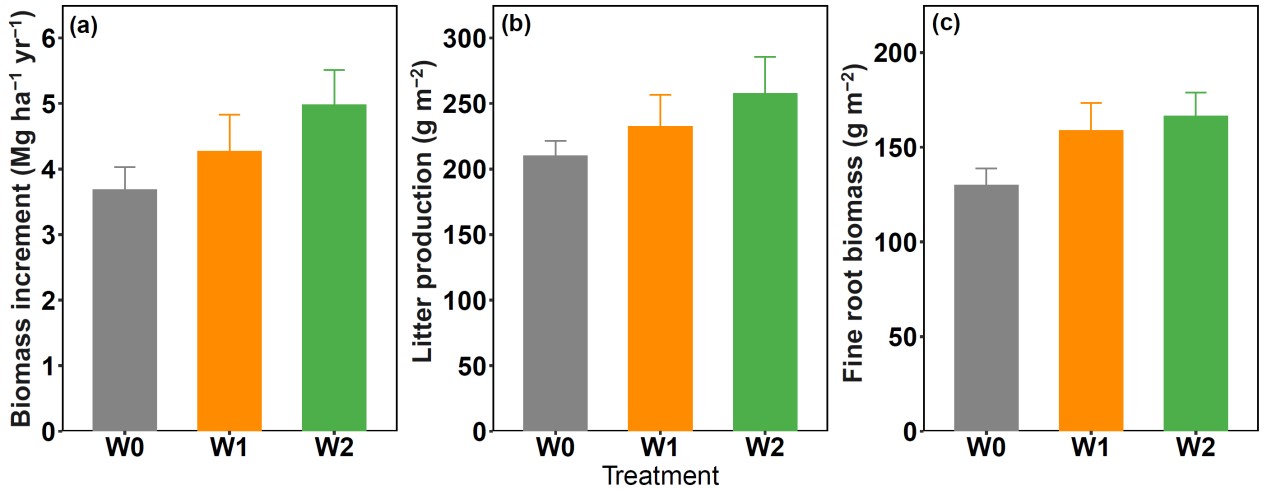How Enhanced Rock Weathering Influences Carbon Sequestration in Temperate Forests
Researchers from the Institute of Applied Ecology, Chinese Academy of Sciences (CAS), have conducted an ecosystem-wide assessment of enhanced rock weathering (ERW) in forest plantations. Led by Dr. KANG Ronghua, this study explored how the application of finely ground silicate minerals influences soil carbon fluxes and tree growth in a larch plantation in northeastern China. The findings were published in Forest Ecology and Management under the title “Carbon sequestration induced by enhanced silicate rock weathering in a temperate larch plantation in Northeastern China.”
Enhanced rock weathering is regarded as a promising negative emission technology that removes atmospheric carbon dioxide (CO2) by converting it into bicarbonate or carbonate minerals through chemical reactions between CO2 and silicate rocks. While many previous studies have focused on inorganic carbon formation during this process, few have explored how ERW influences the overall carbon balance and biological processes at the forest ecosystem scale.
To investigate these effects, the research team carried out a two-year field experiment in a Larix gmelinii (Dahurian larch) plantation located in the Changbai Mountain region of northeastern China. The scientists applied wollastonite powder, a calcium silicate mineral, at three rates (0, 5, and 10 tons per hectare) and continuously monitored soil CO2 fluxes, soil carbon composition, and tree growth indicators.
The researchers found that during the first year, wollastonite application significantly reduced soil CO2 emissions. Compared to the control, plots receiving wollastonite addition exhibited approximately 16 percent lower CO2 fluxes, respectively. The researchers attributed this reduction to the stabilization of soil organic carbon and the chemical conversion of CO2 during silicate weathering. However, in the second year, soil CO2 fluxes increased by approximately 5 percent in the treated plots relative to the control. The team hypothesized that this increase could be attributed to intensified root respiration, changes in soil pH, and more rapid decomposition of surface soil organic carbon, processes potentially induced by calcium ions released from wollastonite weathering. In addition to these soil effects, the researchers observed that trees in the treated plots displayed a non-significant increase in biomass (Figure 1). The researchers speculated that, over extended periods, ERW might improve vegetation productivity, thus promoting greater carbon sequestration through enhanced plant growth.
According to the team, these results demonstrate that assessing the carbon sequestration potential of enhanced rock weathering requires considering inorganic carbon formation, soil organic carbon dynamics and vegetation responses.

Figure 1. Responses of tree growth, litter production, and fine-root biomass to wollastonite application in the larch plantation (Image by SU Chenxia).



